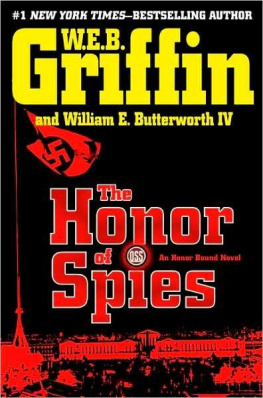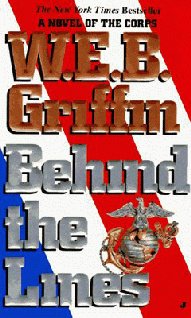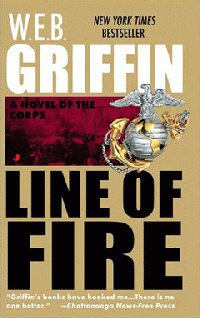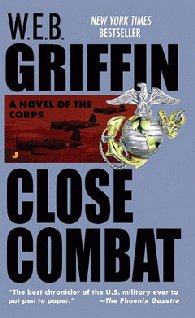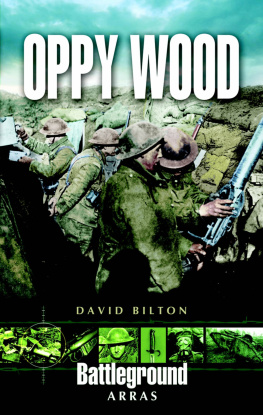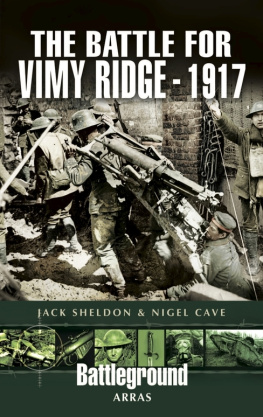W.E.B. Griffin - The Corps IV - Battleground
Here you can read online W.E.B. Griffin - The Corps IV - Battleground full text of the book (entire story) in english for free. Download pdf and epub, get meaning, cover and reviews about this ebook. genre: Prose. Description of the work, (preface) as well as reviews are available. Best literature library LitArk.com created for fans of good reading and offers a wide selection of genres:
Romance novel
Science fiction
Adventure
Detective
Science
History
Home and family
Prose
Art
Politics
Computer
Non-fiction
Religion
Business
Children
Humor
Choose a favorite category and find really read worthwhile books. Enjoy immersion in the world of imagination, feel the emotions of the characters or learn something new for yourself, make an fascinating discovery.
- Book:The Corps IV - Battleground
- Author:
- Genre:
- Rating:3 / 5
- Favourites:Add to favourites
- Your mark:
- 60
- 1
- 2
- 3
- 4
- 5
The Corps IV - Battleground: summary, description and annotation
We offer to read an annotation, description, summary or preface (depends on what the author of the book "The Corps IV - Battleground" wrote himself). If you haven't found the necessary information about the book — write in the comments, we will try to find it.
The Corps IV - Battleground — read online for free the complete book (whole text) full work
Below is the text of the book, divided by pages. System saving the place of the last page read, allows you to conveniently read the book "The Corps IV - Battleground" online for free, without having to search again every time where you left off. Put a bookmark, and you can go to the page where you finished reading at any time.
Font size:
Interval:
Bookmark:

Griffin W.E.B.
The Corps IV - Battleground
The Corps is respectfully dedicated to the memories of Second Lieutenant Drew James Barrett III, USMC Company K, 3rd Battalion, 26th Marines Born Denver, Colorado, 3 January 1945 Died Quang Nam Province, Republic of Vietnam, 27 February 1969 and Major Alfred Lee Butler III, USMC Headquarters 22nd Marine Amphibious Unit Born Washington, DC, 4 September 1950 Died Beirut, Lebanon, 8 February 1984. And to the Memory of Donald L. Schomp A Marine Fighter Pilot who became a legendary U.S. Army Master Aviator RIP 9 April 1989. "Semper Ft/"
Chapter One
(One)
MIDWAY ATOLL
0455 HOURS 4 JUNE 1942
William Charles "Bill" Dunn, USMCR, of Point Clear, Alabama, was twenty-one years old, five feet six inches tall, and weighed 142 pounds; he'd been a First Lieutenant, USMCR, twelve, days, and a Naval Aviator not quite six months; and in all that time-in all his twenty-one years, even-he'd never had a night as hard as the last one. By the time he threw off the sheet that morning and swung his feet onto the floor, he did it with the sinking conviction that he was a coward. That conviction didn't come as a surprise to him. The thought, if not the conviction, had been there when he crawled into bed, and more times than he wanted to count he'd woken up during the night with it.
Just about every time he did that, he'd had to rush to the head to move his bowels. As far as he was concerned, that made him-literally-"scared shitless." It did not strike him as amusing. Now that his bowels were empty, he had an urge-suppressed only with enormous effort-to throw up.
And every couple of minutes he felt a cold and clammy sweat on his back and on the seat of his skivvy shorts.
The reason his body was acting so wild was that today he was going, as the Naval Service so quaintly put it, "In Harm's Way." The Japanese were about to attack the islands where Dunn was stationed, with the objective of capturing them; the United States Navy was determined not to lose them. Both sides had sent formidable naval forces toward the area. And both forces were closing in on one another. Bill Dunn's role in this vast exchange was to fly a single seater fighter off this tiny little airfield to see if he could shoot at least some of the Japanese airplanes down.
All for the sake of a circular atoll surrounding a pair of tiny dots of land (total area, two square miles) lying just east of the International Date Line, 1,300 miles Northwest of Pearl Harbor. The dots themselves were named Eastern Island (1.25 miles long) and Sand Island (1.75 miles); and the whole thing, including the atoll, was called Midway.
Midway had been an American possession since just after the Civil War. But, with the exception of a cable station, it had been essentially abandoned and forgotten until 1936. That year, Pan American Airways instituted scheduled service between Hawaii and the Philippine Islands using Midway as a midpoint stop. Once that facility was in place, the strategic importance of Midway began to grow apparent, until in 1939, the Navy Hepburn Board (named after its senior member), charged with evaluating Navy facilities in the Pacific in case of war, determined that those tiny dots of land were "second only in importance to Pearl Harbor" itself.
In 1940, the Navy started construction of extensive facilities to service both aircraft and submarines on Midway. A Navy dock was completed on 1 September 1940, and on 29 September, about a third of the 3rd USMC Defense Battalion arrived with one battery of two five-inch naval cannons and some machine guns to defend the atoll.
The decision was made to build an airstrip (only facilities for seaplanes were originally planned) and Army Engineers began to dredge the channel between the islands and undertook other construction work.
The Japanese, meanwhile, attacked Midway at 2135 hours 7 December. The destroyers Sazanami and Ushio under Captain Koname Konishi shelled the tiny islands for twenty-three minutes, causing minimal damage. The three- and five-inch naval cannon of the 6th Defense Battalion (which had replaced the 3rd) returned the fire and claimed damage to both vessels.
This first Japanese attack was hardly more than a nuisance, but other attacks, including an amphibious assault, were expected. And so by the end of May, Midway had received meaningful reinforcement: The Marine Corps had furnished five anti-aircraft batteries, ranging in size from twenty-mm to three-inch; two companies of the 2nd Marine Raider Battalion; and even a platoon (five) of light tanks.
During the same time, the small airstrip on Eastern Island had become home to an odd mixture of aircraft: In addition to the original fourteen Navy Consolidated PBY Catalinas, there were two Royal Dutch Navy Catalinas, which had attached themselves for service after they were unable to return to their base; the U.S. Army Air Corps had flown in from Oahu four twin-engine Martin B-26 Marauder medium bombers and seventeen four-engine heavy bombers, Boeing B-17 "Flying Fortresses"; while the Navy had sent six torpedo-carrying Grumman TBF Avengers.
Most of the aircraft, however (sixty-four), were Marine: nineteen Douglas SBD-2 Dauntless dive bombers; seventeen (virtually obsolete) Vought SB2U-3 Vindicator dive bombers; twenty-one (obsolete) Brewster Buffaloes; and seven of the new Grumman F4F-3 Wildcat fighters.
In the days before this particular morning, Navy Intelligence, whose information in this instance Bill Dunn trusted, had provided a good deal of information about the enemy, all of it alarming:
Their Midway Strike Force, under Admiral Chuichi Nagumo, was built around four aircraft carriers: The Akagi (at 36,500 tons, Japan's largest carrier); Kaga (36,000 tons); and Hiryu and Soryu (both much smaller at 16,000 tons). The force also included two battleships, three cruisers, destroyers and other screening vessels, and transports for 1,500 men of the Special Naval Landing Force and 1,000 soldiers of the Ichiki Detachment.
There were going to be large numbers of Japanese aircraft: "Probably in excess of one hundred," the skinny, bespectacled, school-teacherish Navy full Lieutenant Intelligence Officer had announced at the most recent briefing, sounding as bored as a guide in the Atlanta Zoo telling visitors about the wonders they could find in the reptilarium.
If the Japanese followed their usual practice, based upon the normal complement of aircraft aboard their carriers, three types of aircraft would be in the striking force, and in roughly equal numbers.
There would be an element of Nakajima B5N1 Torpedo Bombers, single engine, low wing monoplanes, which some Navy Intelligence bureaucrat had decided should be known as Kates. Since torpedoes cannot sink an island, even little, bitty ones like Sand and Eastern Islands, Intelligence had cleverly deduced that the Kates would probably be operating in their bomber and not their torpedo role. That meant the Kates would have large bombs, probably enormous bombs, slung beneath their fuselages, and they would carry three men aboard, instead of the usual two. When it was used to deliver torpedoes, the pilot aimed the single torpedo Kates could handle; when it was used as a bomber, there was a bombardier. The pilot could also fire the two 7.7mm machine guns in his wings. And there was always a gunner, who fired a single 7.7mm machine gun from the back seat.
They could also, according to the Atlanta Zoo guide, expect an element of Vals. The Val was officially the Aichi D3A1 Navy Type 99 Carrier Bomber Model 11. Bill Dunn vaguely remembered hearing someplace that Type 99 (or was it Model 11?) made reference to the year in the Japanese calendar, which was different from the calendar used in the West.
Next pageFont size:
Interval:
Bookmark:
Similar books «The Corps IV - Battleground»
Look at similar books to The Corps IV - Battleground. We have selected literature similar in name and meaning in the hope of providing readers with more options to find new, interesting, not yet read works.
Discussion, reviews of the book The Corps IV - Battleground and just readers' own opinions. Leave your comments, write what you think about the work, its meaning or the main characters. Specify what exactly you liked and what you didn't like, and why you think so.


